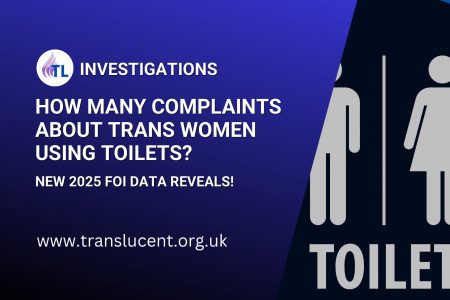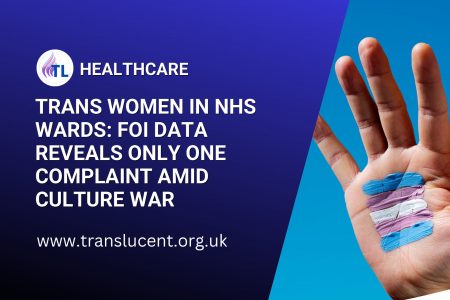Summary
The evidence base for puberty blockers is scientific, not ideological, and this article criticises the gender-critical movement for manipulating science and being linked to anti-LGBT hate groups.
The NHS puberty-blockers trial is a danger to children – a response.
by Steph Richards. OPINION
Four days ago (4/3/25), the magazine ‘Spiked Online’ posted an article with the headline, “The NHS’s puberty-blockers trial is a danger to children.” Authored by gender-critical Jo Bartosch, the article implied that puberty blockers (GnRH analogues) are unsafe and should not be undergoing trials.
Bartosch wrote:
“In principle, it sounds reasonable to gather more data before either cementing a ban or extending the use of an experimental drug. But the evidence base for the use of puberty blockers is ideological, not scientific”.
While I would contest many points in the Spiked Online article, I want to examine these two prominent sentences.
Firstly, is GnRH an “experimental drug”?
GnRH (gonadotropin-releasing hormone) was discovered in the early 1970s by Nobel laureates Andrew V. Schally and Roger Guillemin. This significant discovery paved the way for the development of synthetic analogues of GnRH, which have been in use for over four decades, demonstrating their reliability and trustworthiness in various medical treatments, including precocious puberty in young children and gender-questioning adolescents.
The first recorded use of GnRH analogues in the use of gender-questioning adolescents dates back to 1985, and evidence of this fact is recorded in a PubMed Central paper titled “Puberty Suppression in a Gender-Dysphoric Adolescent: A 22-Year Follow-Up” dated 2011.
The study was on a 22-year follow-up case report that focused on one individual who was treated with GnRH analogues at 13 years of age. The report refers to a previous case study published in 1998 regarding the same patient. The study also mentions a Dutch cohort of adolescents treated with GnRH analogues but does not provide specific numbers for that group. Another report with the title “Clinical management of gender identity disorder in adolescents: a protocol on psychological and paediatric endocrinology aspects” is dated 2006 and also refers to GnRH analogues being prescribed.
Both the 2006 clinical guideline and the 2011 case report suggest that puberty blockers can be a valuable component in the treatment of gender dysphoric adolescents and that there were no significant concerns about their use.
While both these studies originate from Holland – believed to be the first country to use puberty blockers to treat gender-questioning children, we know the first use of them in the UK was in the late 1990s or early 2000s as one of our team members was prescribed them twenty-five years ago.
The definition of “experimental” is:
“using new methods, ideas, substances, etc. that have not been tried before, usually in order to find out what effect they have.
I was left wondering why Jo Bartosch deemed it appropriate to use the word “experimental” when puberty blockers have been in use for some forty years.
This leads to the second sentence saying:
“But the evidence base for the use of puberty blockers is ideological, not scientific.”
Like all medications, puberty blockers are under constant scientific review. The existence of these two rather old papers (along with many others) serves as a testament to the fact that the evidence base for the use of puberty blockers is not ideological, as Bartosch claims, but is firmly rooted in rigorous scientific research, providing reassurance and confidence in their use.
TransLucent posted our own Puberty Blocker Position Statement on 6th December 2024, after significant research over many months.
Unfortunately, the real issue is the gender-critical movement has discovered science can be manipulated by producing papers of their own, effectively “throwing mud” in the knowledge that some mud will stick. GnRH analogues are a case in point, with Project 2025 promoting the same tactic concerning the abortion drug Mifepristone. It is no coincidence that the gender-critical movement is heavily linked to and financed by the evangelical American far-right, which also supports the Trump regime and wrote Project 2025.
One organisation accused of producing gender-critical pseudoscience is the Society for Evidence-Based Gender Medicine (SEGM), an organisation that several NHS gender-critical actors support. The human rights organisation Southern Poverty Law Centre (the organisation responsible for bankrupting the racist, white supremacist Ku Klux Klan) has named SEGM, Genspect and the Alliance Defending Freedom as anti-LGBT hate groups.
A response letter in The British Medical Journal dated 4th February stated:
It is heartening to see the BMJ making a stand against anti-gender ideology. However, for this to be more than an empty gesture it must address its own role in both promoting anti-gender ideology and giving that ideology a cloak of faux scientific legitimacy. To give just two examples, in October 2024 the BMJ published an article representing the Society for Evidence-Based Gender Medicine (SEGM) as an authority in trans health. However, SEGM is listed by the Southern Poverty Law Center as an anti-LGBT hate group with links to a number of other anti-gender groups, and SEGM has been a significant actor in anti-gender legal cases in the USA. Secondly, in April 2024, one of the co-authors of this editorial described arguing for gender-affirming care for young trans people as “activism based on substandard evidence.” Further, the BMA wrote to the BMJ in 2023 to express concerns about an article which it said had been used by transphobic lobby groups around the world.
The BMJ needs to take responsibility for its part in encouraging and legitimating anti-gender ideology over a number of years, and then take action to actively oppose this ideology. Only then will it be seen to “stand for integrity and equity”.
And on that note, no more needs to be said.









 To provide the best experiences, we use technologies like cookies to store and/or access device information. Consenting to these technologies will allow us to process data such as browsing behaviour or unique IDs on this site. Not consenting or withdrawing consent, may adversely affect certain features and functions.
To provide the best experiences, we use technologies like cookies to store and/or access device information. Consenting to these technologies will allow us to process data such as browsing behaviour or unique IDs on this site. Not consenting or withdrawing consent, may adversely affect certain features and functions.